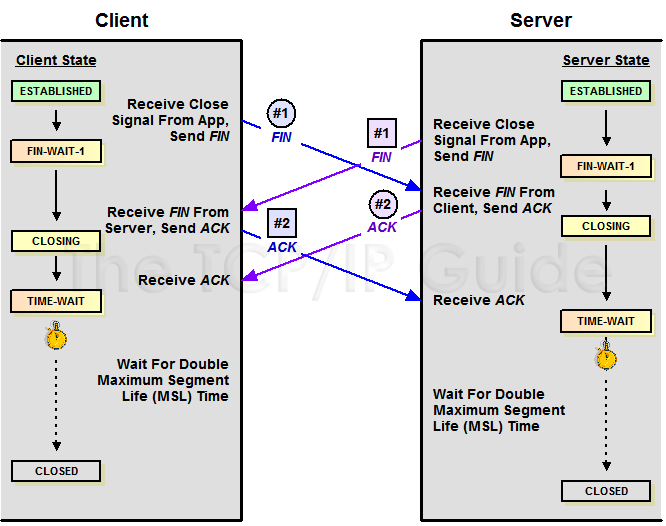 |
|
Please Whitelist This Site?
I know everyone hates ads. But please understand that I am providing premium content for free that takes hundreds of hours of time to research and write. I don't want to go to a pay-only model like some sites, but when more and more people block ads, I end up working for free. And I have a family to support, just like you. :)
If you like The TCP/IP Guide, please consider the download version. It's priced very economically and you can read all of it in a convenient format without ads.
If you want to use this site for free, I'd be grateful if you could add the site to the whitelist for Adblock. To do so, just open the Adblock menu and select "Disable on tcpipguide.com". Or go to the Tools menu and select "Adblock Plus Preferences...". Then click "Add Filter..." at the bottom, and add this string: "@@||tcpipguide.com^$document". Then just click OK.
Thanks for your understanding!
Sincerely, Charles Kozierok
Author and Publisher, The TCP/IP Guide
|
|
|

Custom Search
|
|
TCP Connection Termination
(Page 4 of 4)
Simultaneous Connection Termination
Just as it is possible for the normal connection establishment process to be changed if two devices decide to actively OPEN a connection to each other, it is also possible for two devices to try to terminate a connection simultaneously. This term “simultaneously” doesn't mean that they both decide to shut down at exactly the same time—variances in network delays mean nothing can be simultaneous on an internetwork anyway. It simply means that, in the example above, the client decides to shut down and sends a FIN, but the server sends its own FIN before the client's FIN shows up at the server. In that case, a different procedure is followed, as described in Table 155 and Figure 215.
As you can see, the process is much more symmetric in this case, with both devices transitioning through the same states. In either case the end result is the same, with the connection in the CLOSED state—meaning no connection. Each TCP will make sure all outstanding data is sent to the application, sometimes referred to as an implied “push” (see the description of the “push” function for an explanation of this term). The transmission control blocks (TCBs) established for the connection in both devices are destroyed when the connection is closed down.
Client |
|
|
Server |
|
|
Start State |
Action |
Transitions To State |
Start State |
Action |
Transitions To State |
ESTABLISHED |
Client Close Step #1 Transmit: The application using TCP signals that the connection is no longer needed. The TCP on the client sends the next segment with the FIN bit set, indicating a request to close the connection. |
FIN-WAIT-1 |
ESTABLISHED |
Server Close Step #1 Transmit: Before the server can receive the FIN sent by the client, the application on the server also signals a close. The server also sends a FIN. |
FIN-WAIT-1 |
FIN-WAIT-1 |
Server Close Step #1 Receive and Step #2 Transmit: The client has sent a FIN and is waiting for it to be acknowledged. Instead, it receives the FIN sent by the server. It acknowledges the server's close request with an ACK and continues to wait for its own ACK. |
CLOSING |
FIN-WAIT-1 |
Client Close Step #1 Receive and Step #2 Transmit: The server has sent a FIN and is waiting for it to be acknowledged. Instead, it receives the FIN sent by the client. It acknowledges the client's close request with an ACK and continues to wait for its own ACK. |
CLOSING |
CLOSING |
Client Close Step #2 Receive: The client receives the ACK for its FIN. |
TIME-WAIT |
CLOSING |
Server Close Step #2 Receive: The server receives the ACK for its FIN. |
TIME-WAIT |
TIME-WAIT |
The client waits for a period of time equal to double the maximum segment life (MSL) time. This gives enough time to ensure the ACK it sent to the server was received. |
— |
TIME-WAIT |
The server waits for a period of time equal to double the maximum segment life (MSL) time. This gives enough time to ensure the ACK it sent to the client was received. |
— |
TIME-WAIT |
The timer expires after double the MSL time. |
CLOSED |
TIME-WAIT |
The timer expires after double the MSL time. |
CLOSED |
CLOSED |
The connection is closed. |
— |
CLOSED |
The connection is closed. |
— |
|
|

|
| |||||||||||||||||||
Home - Table Of Contents - Contact Us
The TCP/IP Guide (http://www.TCPIPGuide.com)
Version 3.0 - Version Date: September 20, 2005
© Copyright 2001-2005 Charles M. Kozierok. All Rights Reserved.
Not responsible for any loss resulting from the use of this site.








 Key Concept: Just as two devices can simultaneously open a TCP session, they can terminate it simultaneously as well. In this case a different state sequence is followed, with each device responding to the other’s FIN with an ACK, waiting for receipt of its own ACK, and pausing for a period of time to ensure that its ACK is received by the other device before ending the connection.
Key Concept: Just as two devices can simultaneously open a TCP session, they can terminate it simultaneously as well. In this case a different state sequence is followed, with each device responding to the other’s FIN with an ACK, waiting for receipt of its own ACK, and pausing for a period of time to ensure that its ACK is received by the other device before ending the connection.